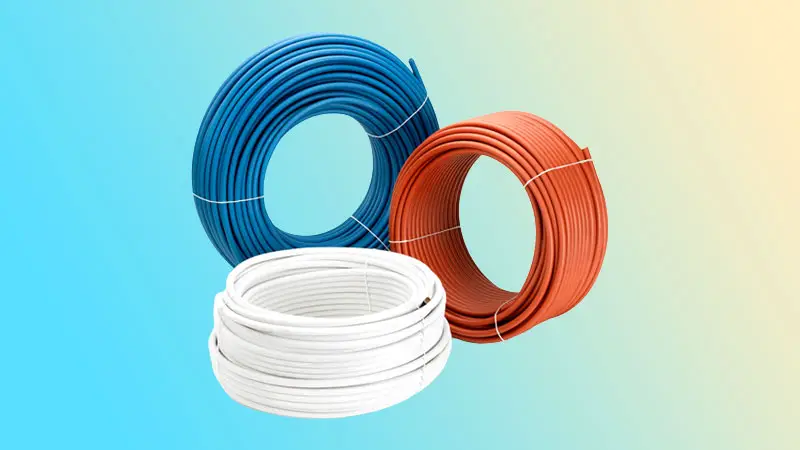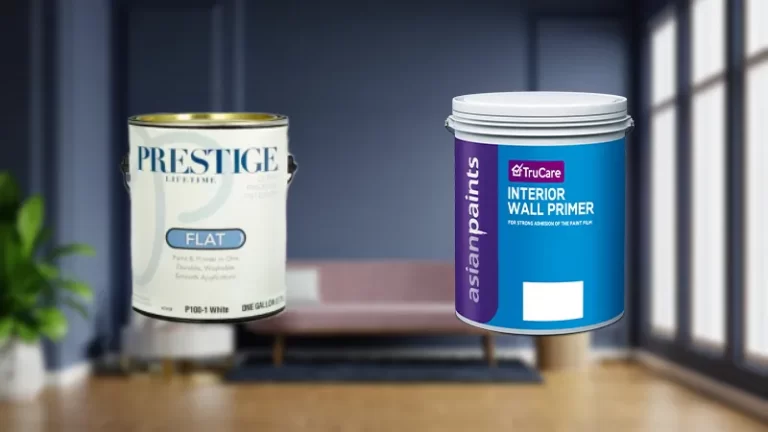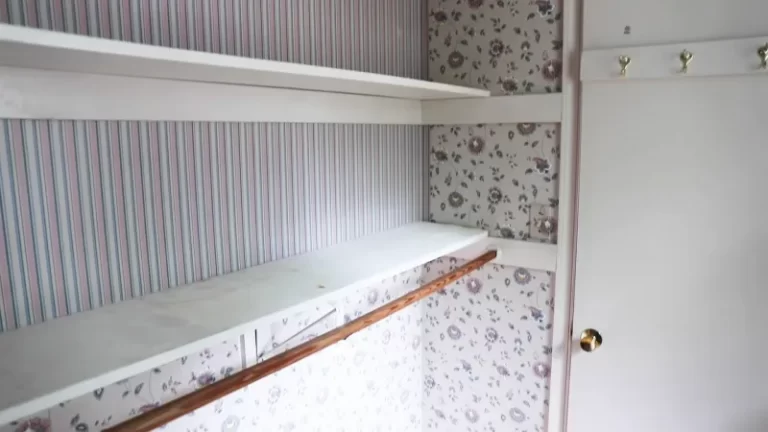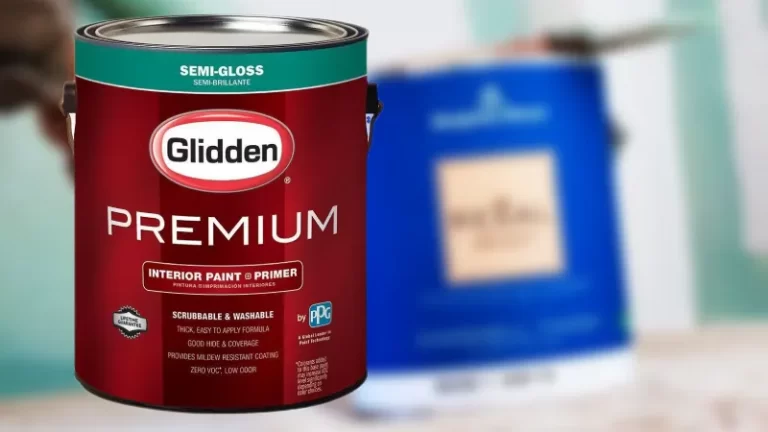Can You Paint Pex Pipe?

Pex pipe, also known as cross-linked polyethylene pipe, is a type of plastic piping that is widely used in residential and commercial plumbing and piping systems. It is known for its flexibility, durability, and corrosion resistance, which make it an attractive option for a wide range of applications.
Pex pipe is often used for water supply lines, radiant heating systems, and other types of plumbing installations. Its flexibility allows it to be easily installed in tight spaces and around corners, making it a popular choice for many builders and plumbers.
In addition to its practical advantages, pex pipe is also relatively inexpensive and easy to work with, which further contribute to its popularity. Despite these benefits, however, there are some considerations to keep in mind when using pex pipe, including the possibility of painting it.
In this blog, we will explore the question of whether or not pex pipe can be painted, and discuss some alternative options to consider.
You'll Learn About
What to Do With Pex Pipes?
Pex pipe is a type of plastic piping that is often used in plumbing and piping systems, particularly in residential and commercial buildings. It is known for its flexibility, durability, and corrosion resistance, which make it an attractive option for a wide range of applications. However, one question that is commonly asked is whether or not it is possible to paint pex pipe.
Not Recommand to Paint
The short answer is that it is possible to paint pex pipe, but it is generally not recommended. Pex pipe is made of a type of plastic called cross-linked polyethylene, which is resistant to many types of damage but is not necessarily designed to be painted. When paint is applied to pex pipe, it can potentially cause a number of problems.
Paint Peeling
First and foremost, the paint may not adhere properly to the surface of the pex pipe. This can result in the paint peeling or flaking off over time, which can create an unsightly appearance and potentially lead to further damage.
Additionally, the chemicals in some paints may interact with the plastic of the pex pipe, causing it to weaken or become brittle. This can lead to cracks or other types of damage that can compromise the integrity of the pipe.
Affect the Temperature Resistance
Another issue with painting pex pipe is that it may affect the temperature resistance of the pipe. Pex pipe is designed to expand and contract with changes in temperature, and the presence of paint on the surface of the pipe may interfere with this process. This can lead to issues with the pipe’s performance, particularly in environments where the temperature fluctuates significantly.
Audit Before You Paint
Overall, it is generally not recommended to paint pex pipe. If you are considering painting your pex pipes, it is important to consult with a professional contractor or the manufacturer of the pipe to determine if it is safe and advisable to do so. In many cases, it may be more practical to find alternative solutions, such as enclosing the pipes in a protective casing or using a different type of piping material altogether.
Why You Might Want to Paint Pex Pipes?
There are a few reasons why someone might consider painting PEX pipes.
Match a Particular Color Scheme
One reason could be for aesthetic purposes, such as wanting to match a particular color scheme in a room or to make the pipes blend in with their surroundings. In some cases, painting the pipes might be seen as a more attractive option than using unsightly protective coverings or conduit.
Protect Them From Uv Light
Another reason why someone might want to paint PEX pipes is to protect them from UV light. PEX pipes are vulnerable to UV light, which can cause them to deteriorate over time. By applying a layer of paint, it is possible to block out UV light and help extend the lifespan of the pipes.
However, it is important to keep in mind that paint alone may not be sufficient to fully protect the pipes from UV light and other environmental factors.
Can Pex Pipe Be Painted?
When it comes to painting pex pipe, the short answer is that it is technically possible, but it is generally not recommended. Pex pipe is made of a type of plastic called cross-linked polyethylene, which is resistant to many types of damage but is not necessarily designed to be painted.
When paint is applied to pex pipe, it can potentially cause a number of problems.
Paint Won’t Adhere
One of the main issues with painting pex pipe is that the paint may not adhere properly to the surface of the pipe. Pex pipe has a smooth, glossy surface that can be difficult for paint to adhere to, particularly if the pipe is not properly prepared beforehand.
This can result in the paint peeling or flaking off over time, which can create an unsightly appearance and potentially lead to further damage.
Chemical Interation
Another potential issue with painting pex pipe is that the chemicals in some paints may interact with the plastic of the pex pipe, causing it to weaken or become brittle.
This can lead to cracks or other types of damage that can compromise the integrity of the pipe. This is especially true for oil-based paints, which are known to have a strong chemical reaction with plastic materials.
Temperature Resistance
In addition to these issues, painting pex pipe may also affect its temperature resistance. Pex pipe is designed to expand and contract with changes in temperature, and the presence of paint on the surface of the pipe may interfere with this process.
This can lead to issues with the pipe’s performance, particularly in environments where the temperature fluctuates significantly.
Not Recommended
Overall, while it is technically possible to paint pex pipe, it is generally not recommended due to the potential issues with adhesion, chemical interactions, and temperature resistance. If you are considering painting your pex pipes, it is important to carefully consider these potential problems and weigh the pros and cons before proceeding.
In many cases, it may be more practical to find alternative solutions, such as enclosing the pipes in a protective casing or using a different type of piping material altogether.
Why It is Generally Not Recommended to Paint Pex Pipes?
Despite the potential benefits of painting PEX pipes, it is generally not recommended to do so.
Made of a Flexible Plastic Material
One reason is that PEX pipes are made of a flexible plastic material that expands and contracts with temperature changes. This expansion and contraction can cause the paint to crack or peel, which can lead to damage and leaks in the pipe.
Paint React With the Plastic in Pex Pipes
Another reason why it is generally not recommended to paint PEX pipes is that some paint products contain chemicals that can react with the plastic in PEX pipes. These chemicals can cause the plastic to become brittle or break down over time, leading to leaks and other problems.
Wrong Application
In addition to these issues, inadequate coverage or poor application of paint can also lead to problems with PEX pipes. If the paint is not applied evenly or if there are gaps or thin spots, it may not provide sufficient protection for the pipes. As a result, it is important to be thorough and careful when painting PEX pipes to ensure that they are adequately covered and protected.
Things You Need to Know Before Painting Pex Pipes
There are several things to know or things that you will need in order to effectively protect your PEX pipes from UV light and other environmental factors:
Know the Sensitivity of Pex to Uv Light and Certain Chemicals
It is important to be aware of the sensitivity of PEX to UV light and certain chemicals, as this can help you choose the most appropriate protective measures. PEX is particularly sensitive to UV light and can deteriorate when exposed to it over an extended period of time. It is also sensitive to certain chemicals, such as petroleum-based products, which can cause it to become brittle and prone to cracking.
Understand the Risks and Limitations of Painting Pex Pipes
As discussed earlier, painting PEX pipes can be risky due to the potential for the paint to chip or peel off over time, provide inadequate protection against UV light, or contain chemicals that can damage or weaken the pipe. It is important to understand these risks and limitations in order to make an informed decision about whether to paint your PEX pipes.
Consider Alternative Methods for Protecting Pex Pipes
There are several alternative methods for protecting PEX pipes from UV light and other environmental factors, including using a UV-blocking material, enclosing the pipes in a protective casing, or installing the pipes in a location that is not exposed to direct sunlight. It is important to consider these options and choose the one that best meets your needs and budget.
Use Uv-resistant Materials
When installing PEX pipes, it is important to use UV-resistant materials such as fittings, connectors, wraps, or tapes. These products are designed to withstand exposure to UV light and other environmental factors and can help to extend the lifespan of the pipes.
It is important to choose UV-resistant materials that are compatible with the type of PEX pipe you are using and that meet any applicable code requirements.
Overall, it is important to be aware of the sensitivity of PEX to UV light and certain chemicals and to take appropriate steps to protect these pipes. By following these guidelines and using UV-resistant materials, you can help to extend the lifespan of your PEX pipes.
It’ll reduce the risk of premature failure due to exposure to UV light and other environmental factors.
Alternatives to Painting Pex Pipe
If you are looking to protect your pex pipes or improve their appearance, there are several alternatives to consider instead of painting them.
Protective Casing
One option is to enclose the pipes in a protective casing. This can be achieved by building a soffit along the ceiling or walls to cover the pipes, or by installing a protective casing around the pipes themselves. This can help to protect the pipes from damage and improve their appearance, while also allowing them to expand and contract as needed without interference from paint.
Piping Material Altogether
Another alternative to painting pex pipe is to use a different type of piping material altogether. Copper, for example, is a popular choice for many plumbing and piping installations, and it can be easily painted to match your desired color scheme. Copper is also known for its durability and corrosion resistance, which can make it a more suitable choice for certain applications.
Potential Issues
While it is technically possible to paint pex pipe, it is generally not recommended due to the potential issues with adhesion, chemical interactions, and temperature resistance.
If you are looking to protect your pex pipes or improve their appearance, it may be more practical to consider alternative solutions.
Solutions such as enclosing the pipes in a protective casing or using a different type of piping material. In any case, it is important to seek the advice of a professional contractor or the manufacturer of the pipe before proceeding. So, it is always better to consider the alternatives rather than painting the pex pipes.
What to Consider if You Do Decide to Paint Pex Pipes?
If you do decide to paint PEX pipes despite the general recommendation not to do so, there are several things to consider in order to ensure that the process goes smoothly and that the pipes are adequately protected.
- It is important to use a paint specifically designed for use on plastic. Not all paints are suitable for use on plastic surfaces, and using the wrong type of paint can lead to problems such as peeling, cracking, or reacting with the plastic.
- Be sure to read the label carefully and choose a paint that is specifically designed for use on plastic.
- It is important to follow the manufacturer’s instructions carefully when applying the paint. This will help ensure that the paint is applied evenly and that it adheres properly to the surface of the pipes.
- Pay close attention to any drying or curing times specified by the manufacturer, as these are important for ensuring that the paint is fully dry and ready for use.
- It is generally recommended to apply multiple coats of paint to PEX pipes in order to achieve sufficient coverage and protection. This is especially important if you are using a paint that is not specifically designed for use on plastic, as it may require additional coats to achieve the desired level of protection.
- Be sure to allow adequate drying time between coats to ensure that the paint is fully dry and ready for the next application.
Tips for Protecting Pex Pipes From Uv Light
Here are some additional tips for protecting PEX pipes from UV light and other environmental factors:
Use a Uv-resistant Wrap or Tape
In addition to using a pre-sheathed pipe or UV-resistant tape, you can also consider using a UV-resistant wrap or tape. These products are specifically designed to protect PEX pipes from UV light and other environmental factors. They can be applied directly to the exterior of the pipe and are typically made of a UV-resistant material such as polyethylene or polypropylene.
Install a Uv-blocking Shield or Cover
Another option is to install a UV-blocking shield or cover over the PEX pipes. This can be a simple, cost-effective way to protect the pipes from UV light and other environmental factors. There are several types of UV-blocking covers available, including those made of metal, plastic, or rubber. It is important to choose a cover that is compatible with the type of PEX pipe you are using and that meets any applicable code requirements.
Use Uv-resistant Fittings and Connectors
When installing PEX pipes, it is important to use UV-resistant fittings and connectors. These products are designed to withstand exposure to UV light and other environmental factors and can help to extend the lifespan of the pipes. It is important to choose fittings and connectors that are compatible with the type of PEX pipe you are using and that meet any applicable code requirements.
Avoid Direct Exposure to Uv Light
Finally, it is important to avoid direct exposure of PEX pipes to UV light whenever possible. This can be achieved by installing the pipes in a location that is not exposed to direct sunlight or other sources of UV radiation, such as an underground trench or a location that is covered by an overhang or other protective structure.
By following these tips, you can help to extend the lifespan of your PEX pipes and reduce the risk of premature failure due to exposure to UV light and other environmental factors.
Conclusion
In conclusion, it is generally not recommended to paint pex pipe due to the potential problems that can arise. Pex pipe is made of a type of plastic called cross-linked polyethylene, which is resistant to many types of damage but is not necessarily designed to be painted.
When paint is applied to pex pipe, it can potentially cause issues with adhesion, chemical interactions, and temperature resistance. These problems can compromise the integrity of the pipe and affect its performance over time.
If you are considering painting your pex pipes, it is important to carefully consider these potential problems and weigh the pros and cons before proceeding. It may be more practical to consider alternative solutions, such as enclosing the pipes in a protective casing or using a different type of piping material altogether.
In any case, it is always a good idea to consult with a professional contractor or the manufacturer of the pipe before making a decision. By considering all of your options and seeking the advice of experts, you can ensure that your plumbing and piping systems are safe, reliable, and effective.



![What Causes Joint Compound to Mold [And Prevention]](/wp-content/uploads/2023/01/black-mold-in-joint-compoun-768x432.jpg)

